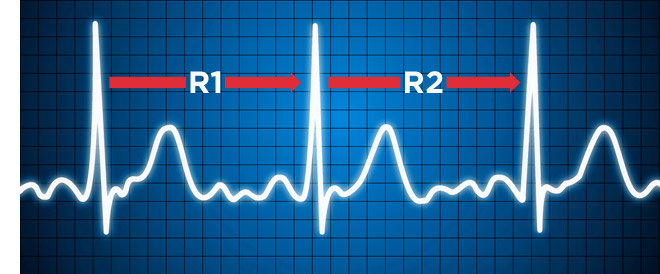Heart Rate Variability (HRV)
HRV: evidence-based diagnostics
The quick and direct proof of effective therapies on the autonomic nervous system requires that these procedures are scientifically validated, quick and easy to perform and can be easily understood by therapist and patient alike. It would also be of great advantage if both conventional and naturopathic therapies could be tested immediately (even after one application) for their effectiveness (therapy control). A globally recognised and meaningful parameter for the regulatory capacity of the autonomic nervous system is the heart rate variability (HRV).
The heart rate variability is recorded by an HRV measurement and subsequently evaluated by the HRV software. During HRV measurement, the time intervals from heartbeat to heartbeat are measured. The data is analysed using various mathematical methods and displayed in graphs.

- time-based (time domain)
- frequency domain
- non-linear analysis methods
The complicated calculations are presented in simple and understandable graphics, which is particularly important for a better and faster understanding of the connections between the sympathetic and parasympathetic nervous systems.
There are extensive scientific studies on the connections between heart rate variability and the development or progression of diseases such as diabetes, burnout, COPD, chronic bronchitis, asthma, heart failure, high blood pressure, fibromyalgia, polyneuropathy, Alzheimer’s, Parkinson’s, tinnitus and many others.
The scientific data on heart rate variability is now so extensive and valid that HRV measurement is fundamentally anchored in the national health care guidelines as a basic diagnostic method as well as in various guidelines of the health insurance companies in different disciplines.
